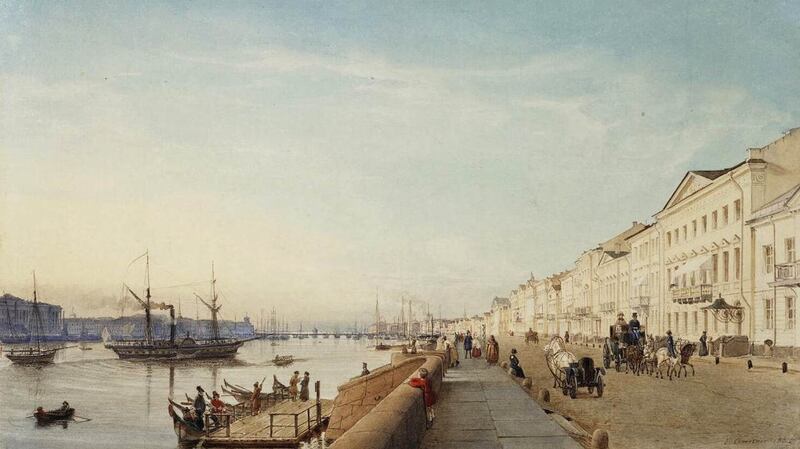Many readers will be familiar with the Irish seafarers who helped establish navies in the Americas in the 18th century: Admiral Brown in Argentina, Commodore Barry in the US, Bernardo O’Higgins in Chile, and Pedro Campbell in Uruguay.
A lesser-known story is that of the Irish in the Russian navy.
In 1736, while Limerick-born field-marshal Peter Lacy marched the Russian army into the Crimean peninsula, seizing the fortress of Azov from Ottoman forces, an Irish naval commander and his two sons saw career opportunities in the expansion and modernisation of Russia’s armed forces.
Earlier that year, Christopher O'Brien had been commanding a British warship in Jamaica when a colleague, recently returned to the Royal Navy after a period in Russia, recommended he apply to the Russian navy. O'Brien followed this advice, and research by historian Rebecca Wills reveals how his contract specified that he should be immediately promoted to rear-admiral, and that he would have the same opportunities for advancement as native Russian officers.
Promotion
O’Brien must have been pleased with new position in Russia, because shortly after his arrival, he sent for his sons, Christopher and Lucius. Both were in the Royal Navy, Lucius a first lieutenant and Christopher a midshipman.
But the Russian Admiralty would only agree to promote them after three years, so their father sent them back to Britain. His bluff worked, and both men returned to Russia after the Admiralty conceded to grant their promotions.
On his arrival, O’Brien the elder was not ordered to the war with Turkey - as he might have expected - but instead, was required to advise the Admiralty on improving shipbuilding and fortifications at Kronstadt.
He was not an engineer, but as an experienced naval officer he was well-equipped to suggest structural amendments to the Kronstadt canal, and to make recommendations for improvements to artillery based on his knowledge of what the British possessed. His suggestions for ship design benefitted the Russian navy at the tail end of the war with Turkey.

Recruitment
The O’Briens found a Russia where foreign experts were actively recruited, and their expertise was highly valued. From the 1690s, Peter the Great brought architects, doctors, engineers, naval officers, soldiers, teachers, and shipbuilders from all over Europe, to build the new capital of Petersburg and create a new image for Russia.
In 1699 alone, according to historian Alexander Kamenskii, 32,000 men were drafted into the Russian army, creating 29 foreign-style regiments commanded by foreign officers.
Other Irish naval officers in Russian service included John O’Dwyer, who served in France and Austria before going to Russia; John Delap, who enlisted as lieutenant in the Russian navy in 1714; Alexander Ogilvie, who was promoted to rear-admiral in 1814 following service in the Napoleonic Wars; and rear-admiral Thomas Candler, who married the daughter of the British consul at Kronstadt. There were certainly many others of lower ranks about whom almost nothing is known.
In 1742, Christopher O’Brien the elder and his son Lucius left Russia. They were both demoted on their return to the Royal Navy - Lucius from captain to lieutenant, his father from vice-admiral to captain. This evidently did little to secure the loyalty of O’Brien the elder - in 1744, he offered the ship under his command, The Royal Sovereign, for a planned Jacobite uprising.
O’Brien’s Jacobite sympathies were no coincidence. Rebecca Wills has shown how influential Scottish Jacobite exiles were at the court of Peter the Great. In 1715, they attempted to form a confederacy between Sweden and Russia against Britain, and in 1723-4, they sent a secret envoy to Russia named Daniel O’Brien, but the tsar died before negotiations could be concluded.
While formal Jacobite-Russian links did not transpire, Irish military migrants continued to seek opportunities in the expanding Russian Empire into the 19th century.
This Extraordinary Emigrants article was written by Dr Angela Byrne, Department of Foreign Affairs and Trade Historian-in-Residence at EPIC The Irish Emigration Museum in Dublin's Docklands. Learn more about Irish mariners at the exhibition, 'Across the Waves: The Seafaring Irish' at EPIC from March 15th to April 12th. epicchq.com








